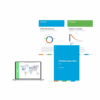How spend analysis can improve your profitability
When you want or need to improve your profitability, it’s often easier to save money by managing costs than by increasing sales. Given that expenses represent an average of 60% of a company’s revenue, understanding those with clarity and precision is crucial.
Altesia addresses this by creating a detailed spend map, which identifies:
- Who is spending on what products and how frequently
- Where the company’s money is going
The objective: providing businesses with a holistic and clearer understanding of their costs, allowing them to align expenditures with budgets and make informed business decisions.

